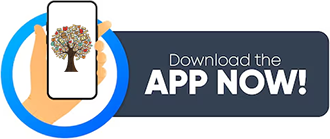Notes For All Chapters – Science Curiosity Class 8
Exploring the Investigative World of Science
Introduction to the Chapter
Purpose: This chapter encourages students to develop curiosity and think like scientists by asking questions, observing carefully, and conducting simple experiments.
Main Idea: Science is not just about learning facts; it’s about investigating the world around us to find answers to questions like “Why?” and “How?”.
Focus for Grade 8: Students will learn to become investigators, exploring both everyday phenomena (e.g., why dough rises) and larger scientific issues (e.g., climate change).
The chapter introduces the main topics that will be explored throughout the year, each connecting to the investigative approach:
Topics covered this year:
- Microbes in a drop of water (helpers & harmful).
- Health → food, exercise, medicines, vaccines.
- Electricity → heating and magnetic effects.
- Forces → motion, pressure, winds, cyclones.
- Matter → particles, elements, compounds, mixtures, solutions.
- Light → reflection, refraction, mirrors, lenses.
- Moon → phases, calendars.
- Ecosystems → relationship of organisms with environment.
- Earth → suitable for life, climate change challenges.
3. Microbes and Health
- Tiny organisms exist in water.
- Some are useful → digestion, medicines.
- Some are harmful → infections.
Health requires:
- Nutritious food.
- Exercise.
- Medicines.
- Vaccines.
4. Electricity and Forces
1. Electricity:
- Heating effect → keeps us warm.
- Magnetic effect → runs motors and machines.
2.Forces:
- Cause motion (speed up, slow down, change direction).
- Examples: ball falls down, car stops with brakes.
3.Pressure:
- Force spread over an object.
- Air pressure → breezes, winds, cyclones.
5. Matter and Its Nature
- Everything made of particles.
- Solids → particles fixed.
- Liquids → particles move slightly.
- Gases → particles move freely.
- Classification:
- Elements → pure substances.
- Compounds → two or more elements bonded.
- Mixtures → physical combinations.
- Solutions → sugar dissolves in tea.
6. Light and the Moon
- Light reflects from flat & curved mirrors.
- Light bends (refracts) through lenses.
- Applications → spectacles, optical devices.
- Rough surfaces & Moon also reflect light.
- Phases of Moon: caused by Earth-Moon-Sun positions.
- Moon cycles → helped humans make calendars.
7. Ecosystems and Earth
- Living beings (plants, animals, humans) depend on environment.
- Ecosystems = interaction of living and non-living things.
Earth supports life because:
- Correct distance from Sun → liquid water.
- Atmosphere → oxygen + UV protection.
- Human activities → disturb climate → global warming.
- Science must guide us to protect Earth.
8. Example of Investigation – The Puri Experiment
- Question: Why does puri puff up? Why thinner on one side?
- Factors we can change (control variables):
- Thickness of dough.
- Size of dough.
- Type of flour.
- Temperature of oil.
- Way of putting dough into oil.
- Things we can observe (measure variables):
- Does it puff (yes/no)?
- Time taken to puff (seconds).
- Thickness of sides.
- Rule: change only one factor at a time.
- Keep notes of all results (splattering, smell, smoke).
- This is called systematic investigation.
9. Conclusion
- Science is everywhere → not only in labs, but also in homes.
- Curiosity + Observation + Experimentation = Investigation.
- Even simple things (puri puffing, Moon phases) are scientific puzzles.
- Aim → become young scientists with curiosity as guide.

Thank you so much e Vidyarthi
To give me this type of notes👆🏻🙏🏻🙏🏻👏🏻
Keep doing well always
Thank you evidyarathi
Thank you
Thank you so much for providing these notes for free. You are truly a blessing for me. I come from a middle-class family and cannot afford expensive classes, but your free notes are helping me a lot. I’m really grateful 🙏🏻
Good